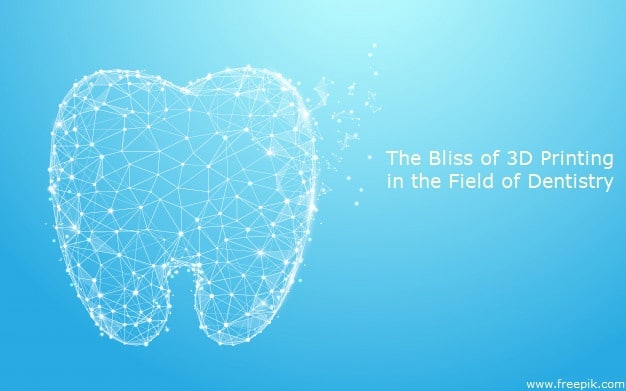The commonest application of the 3D technology today is in the transparent aligners. Night guards almost equally utilize this emerging technology. Aligners are alternative to braces and their USP happens to be their invisibility. The 3D PRINTING technology allows the manufacturing of the invisible aligners on the same day of your appointment itself! Night guards on the other hand, are devices that aid in hindering the ill habit of teeth grinding (bruxism) at night.
Your dentist or orthodontist uses the software to scan and generate a 3D model of your teeth. This model is then used in preparing the aligner. Since the 3D replication matches the specifications of your teeth, the aligners come perfectly custom fitted. The aligner is then adjusted to the patient’s teeth.For the manufacturing purpose, either of the two methods are used. The first is to print the model of the patient’s teeth. In this process, a vacuum is used to form a plastic sheet over the model which later becomes the aligner itself. Alternatively, your dentist could use the model of the patient’s teeth to create the aligner itself, which is then printed. This naturally requires a very high definition dental 3D printer with a special kind of resin.
Crowns are one of the best options for restorative dentistry. They are opted for when a missing or a badly damaged tooth (of which only a little portion remains) need to be replaced. The conventional process would require preparing a mould in order to capture the shape and size of your original tooth. It is then sent to the laboratory and the manufactured crowns takes almost a fortnight to arrive at your dental office! 3D printing makes the whole process incredibly simple and your crown is made in the office in less than 30 minutes using either a special resin or the CNC technology to carve out the crown from porcelain.
In case of surgical interventions, it is very crucial that things start off well from the very beginning. A model of the patient’s teeth on which the dentist is to perform is final surgical act, is of maximum aid to the surgeon.3D models are indeed a quick scan of the patient’s mouth and are truly easy to make. Nevertheless, they are powerful tools for a dentist as they enable them to cross check their work before it is surgically implanted into the mouth of the patient. Since they are not actually placed inside any mouth, they don’t require any indispensable technology or resin. This makes the affair pretty simple!
Dentist, who save money: A dental laboratory is an additional cost for any dental practice. Even if implemented in-house, the initial cost of employing skilled staff to produce dental implants itself is a considerable investment. The expenses could reach a whopping $100,000 per year. The one-time cost of about $20,000 for a top-model 3D printer, seems quite affordable as compared to the former. It is also inclusive of the initial supply of materials.
Patients also save money: The high costs on part of the dental office, is obviously reflected in each patient’s bill. Using traditional technologies, a single crown can cost 80 percent more than that which uses the 3D technology.
Both dental and orthopedic services have sped up and are more accurate: Manually making models is highly time consuming as compared to 3D printing. Accuracy also improves as 3D printers convert digital images into physical objects. Both increased production and more accuracy lets the dental industry flourish at the end.
Dental 3D printing is a rapidly growing industry that is being readily adopted by dental offices everywhere. It promises speed and precision in dental work and are therefore not only dear to patients but also dentists too. The industry today is significantly inclusive of not only manufacturers but also researchers who are exploring new uses of 3D printing for the dental world.
